In the Footsteps of the Romans: Walk Along Ancient Roads of the Roman Empire
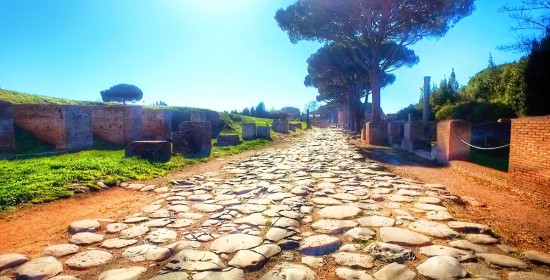
Buongiorno and welcome to Stefano's RomeCabs! Rome's top-rated company for private tours of Rome and Shore Excursions from Civitavecchia. Step back in time and embark on a fascinating journey along the ancient roads of the Roman Empire. One of the great bonuses of visiting Italy is having the opportunity to actually walk along these historic roads, where you can trace the footsteps of ancient Romans and experience a true walk through time.
The Romans were renowned for their impressive road-building skills, constructing a vast network of roads more than 2,000 years ago. These roads spread like a web from Rome, connecting cities throughout the Roman Empire and inspiring the famous adage, "All Roads Lead to Rome". From small local roads to long-distance highways, the Roman roads served as lifelines, facilitating the movement of armies, civilians, goods, and communications.
At the peak of the Roman Empire, a vast network of roads spanned the Italian peninsula and its provinces. It is estimated that at least 29 military roads radiated from Rome, and over 370 roads interconnected the empire's 113 provinces. These roads were the arteries that fueled the empire's expansion, enabling the efficient movement of people, resources, and ideas.
Join us on this captivating adventure, where you'll discover some of the existing ancient roads of the Roman Empire and marvel at the impressive remains that still stand along these ancient roads. On our Rome’s Empire Roads Tour, you too can walk along these ancient paths, connecting with the past and uncovering the secrets of one of the greatest civilizations in history.
Walk Along Ancient Roads of the Roman Empire
1. VIA APPIA / Ancient Appian Way
The legendary Via Appia, also known as the Appian Way, was constructed in 312 BC, spanning over 500 kilometers and playing a vital role as a trade and military route in ancient Rome. Explore the well-preserved sections of this iconic road, adorned with tombs, monuments, and picturesque countryside scenery.
-
Historical Significance and Geographical Route of Via Appia
The Appian Way, named after the Roman censor Appius Claudius Caecus, holds a significant place in history as one of the earliest and most strategically important Roman roads.
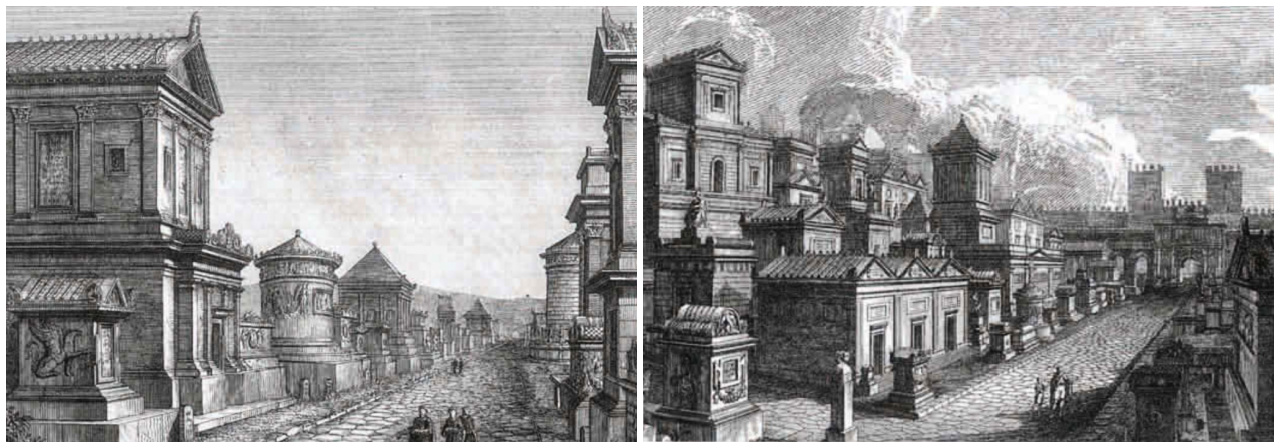
Its construction began in 312 BC during the Samnite Wars, initially serving as a military road to the south. Over time, it evolved into a vital route for military supplies and communication, contributing to the Roman conquest of southern Italy.
The Appian Way quickly gained fame as the "Queen of the Long Roads," (Regina Viarum) symbolizing its crucial role in the Roman Republic. It expanded the reach of Roman influence beyond Rome itself, reaching far-flung regions of the empire. Serving as the backbone of the Roman transportation system, the Appian Way facilitated the expansion of Roman control and the movement of troops, trade caravans, and messengers.
-
Saint Peter's Encounter and Spiritual Journey along Via Appia
According to Christian tradition, when Saint Peter was fleeing persecution in Rome, he encountered a vision of Jesus along the Appian Way. This encounter is known as the "Quo Vadis" legend.
In the legend, as Peter was leaving Rome to escape the persecution of Christians under Emperor Nero, he met Jesus on the Appian Way. Surprised and puzzled, Peter asked Jesus, "Quo vadis, Domine?" meaning "Where are you going, Lord?" Jesus replied, "I am going to Rome to be crucified again." This response made Peter realize that he should not run away from his mission and martyrdom. Inspired and strengthened by the encounter, Peter turned back and returned to Rome, willingly accepting his fate.
The Appian Way, as the backdrop of this legend, became closely associated with the story of Saint Peter's encounter with Jesus and his subsequent decision to face martyrdom in Rome. Today, the Appian Way is regarded as an important pilgrimage route for Christians, symbolizing Peter's spiritual journey and his unwavering commitment to his faith, even in the face of adversity.
At the crossroads is the small Santa Maria in Palmis Church, also known as Church of Domine Quo Vadis (via Appia Antica, 51).
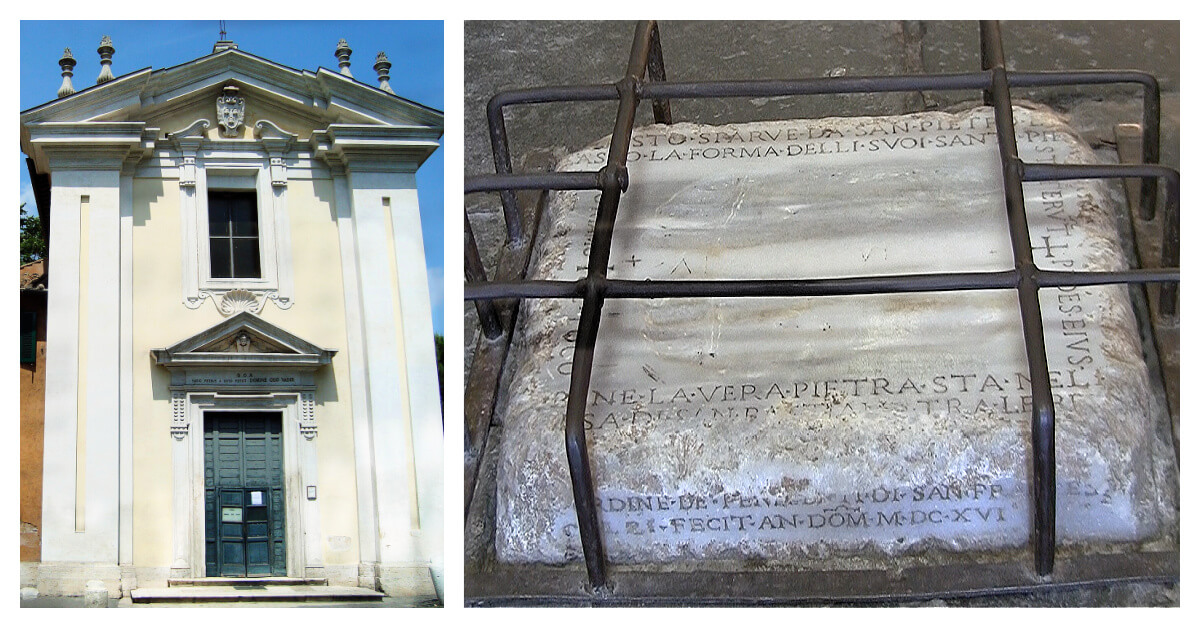
Inside the church lies a captivating sight: a marble slab adorned with two footprints, said to hold a miraculous story. Legend has it that these imprints are divine traces left behind by Jesus himself. The very name of the church, "Santa Maria in Palmis," pays homage to these sacred footprints, with "palmis" symbolizing the soles of Jesus' feet. While the original footprints are preserved in the nearby Basilica of San Sebastiano Fuori le Mura, the copies within this church have garnered immense popularity.
-
Via Appia and the Spartacus Revolt That Shook Rome
During the Third Servile War, Spartacus, a gladiator and leader of a slave revolt, and his army made their mark along the Via Appia, an important Roman road. They roamed the Italian countryside, gathering supporters and challenging the Roman legions sent to suppress them. The strategic position of the Via Appia allowed the rebels to ambush Roman forces and disrupt supply lines. However, the rebellion eventually ended with Spartacus' defeat by Marcus Licinius Crassus. This event left a lasting impact on Roman history, shedding light on the plight of slaves and the need for effective military control. The Via Appia stands as a reminder of this significant chapter and the resilience of those who fought for their freedom.
-
Today's Remnants of Via Appia (Ancient Appian Way)
While the modern landscape has transformed, fragments of the Appian Way continue to stand, offering glimpses into its remarkable legacy.
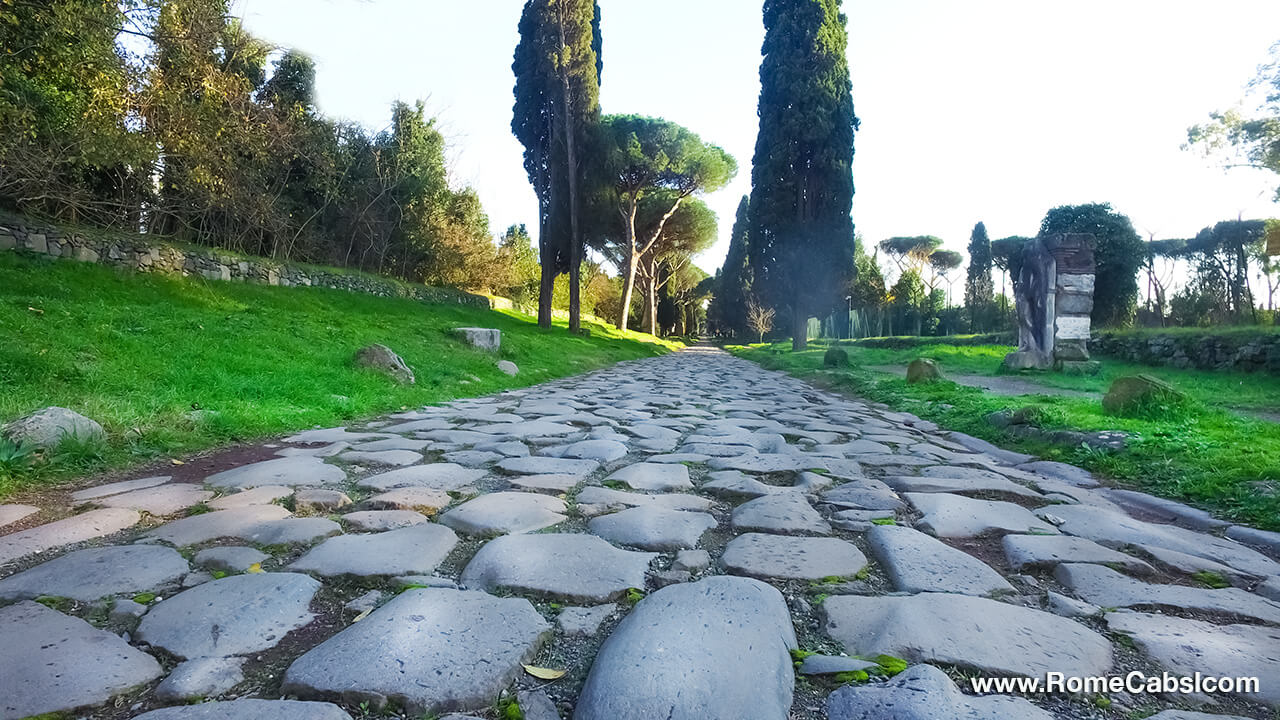
Immerse yourself in history as you walk along the present-day route of the Ancient Appian Way. This ancient road unveils a fascinating tale through its preserved paving stones, majestic tombs, and monumental landmarks. Step upon the large, smooth stone surface, where the indelible marks of centuries of wagon wheels can still be seen, narrating the countless journeys that once graced this renowned thoroughfare.
As you follow in the footsteps of ancient Romans, you can envision the bustling activity and significant historical events that unfolded along this illustrious path.
Along the Via Appia, there are several notable monuments and sites that can be seen and visited, each offering a glimpse into the rich history of ancient Rome. Some of these include:
Catacombs of San Callisto:
Explore the underground burial chambers of early Christians and witness intricate frescoes and fascinating archaeological remains.
Circus of Maxentius:
Marvel at the well-preserved ruins of this ancient Roman circus, which hosted chariot races and other spectacles during the Roman era.
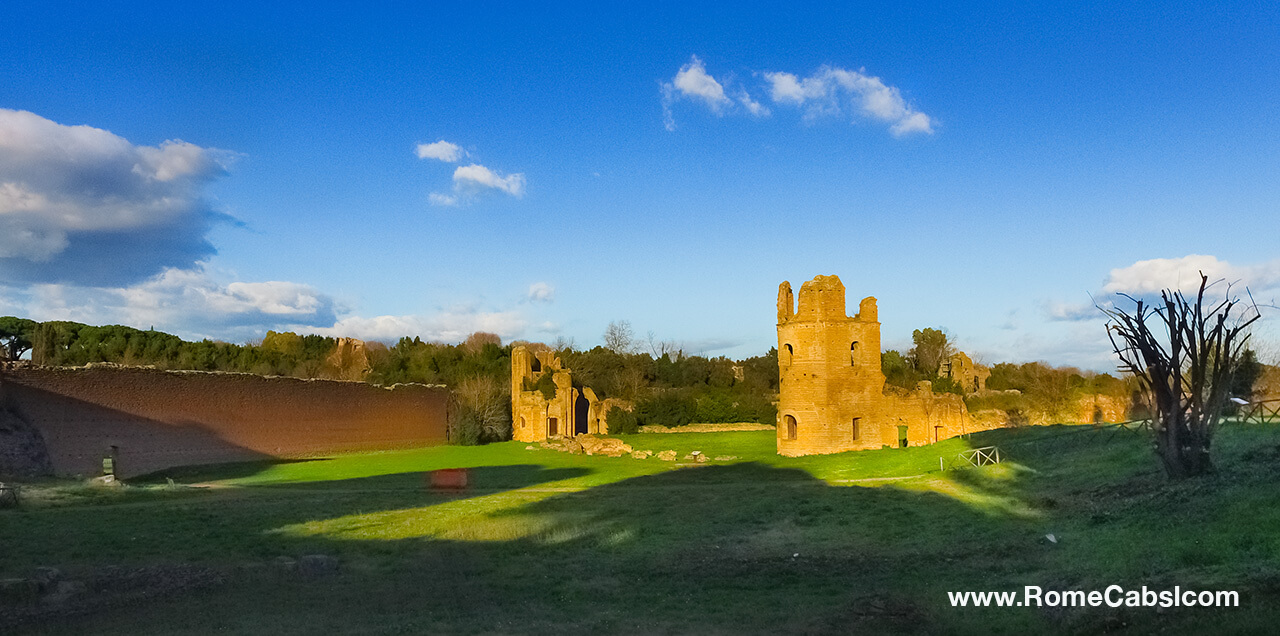
Villa dei Quintili:
Visit the grand ruins of this luxurious Roman villa, once owned by the wealthy Quintili brothers. Explore its vast grounds, baths, and beautifully preserved mosaic floors.
Tomb of Caecilia Metella:
Admire the impressive mausoleum dedicated to Caecilia Metella, a noble Roman woman, located along the Via Appia. Its cylindrical tower and intricate decorations make it a striking sight.
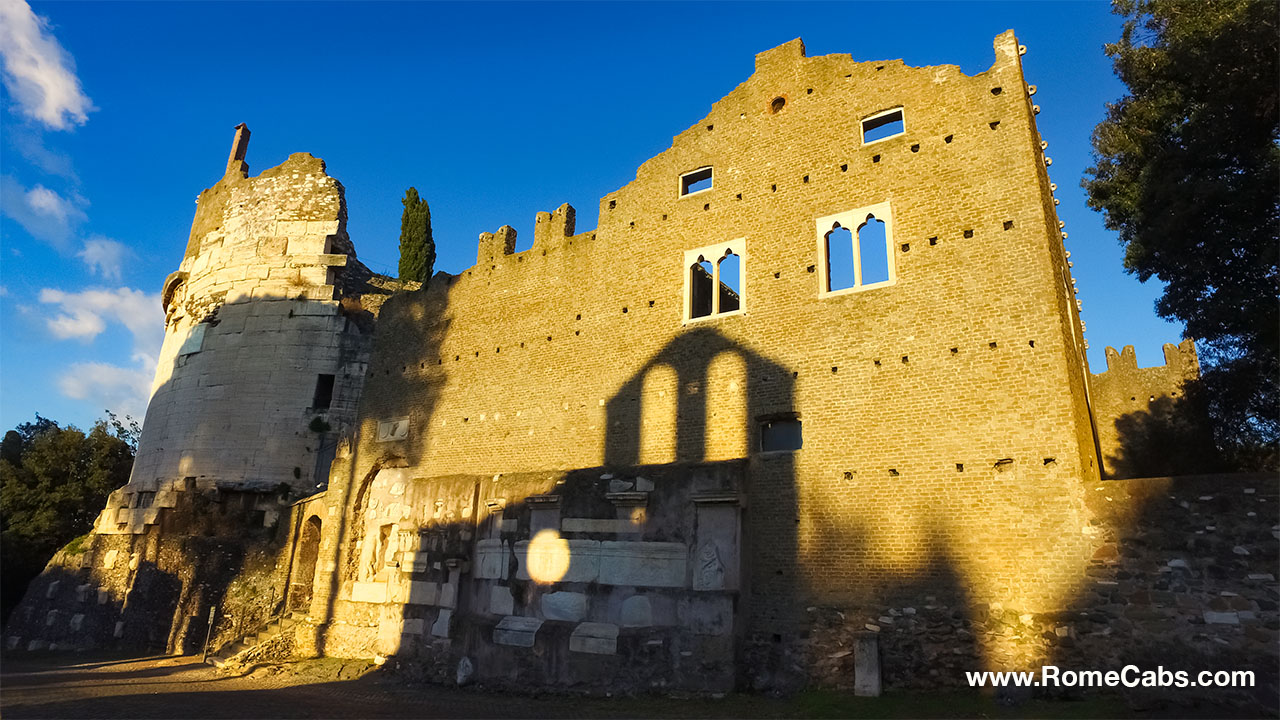
Experience the Appian Way on a Day Tour from Rome
You can visit the Ancient Appian Way from Rome on our Along Rome's Empire Roads Tour. Walk in the footsteps of ancient Romans and discover its well-preserved sections adorned with tombs, monuments, and lush countryside scenery.
2. VIA OSTIENSIS
Named after the ancient port of Ostia Antica, the Via Ostiensis played a pivotal role in Rome's maritime trade and served as a gateway to the Mediterranean. This significant road spanned approximately 30 kilometers, connecting the bustling city of Rome to the picturesque shores of the Tyrrhenian Sea.
-
Tracing the Route of Via Ostiensis
Beginning near the ancient Roman Forum Boarium, the Via Ostiensis winds its way along the eastern bank of the Tiber River, offering breathtaking views of the majestic Aventine Hill and the glistening waters.
Departing from the city's ancient walls through the Porta Trigemina, this vital artery facilitated trade and commerce along its course. With the construction of the Aurelian Walls, the Via Ostiensis found a new passage through the Porta Ostiensis, now known as Porta San Paolo, solidifying its role as a gateway to the bustling port of Ostia Antica.
-
The Legacy of Trade and Decline of Via Ostiensis
In its prime, the Via Ostiensis buzzed with the exchange of goods and cultural influences that fueled the prosperity of the Roman Empire. However, as the empire faced economic challenges in the late Roman era, trade along this ancient route began to diminish, and the once-thriving port of Ostia experienced a gradual decline. Nonetheless, the legacy of the Via Ostiensis lives on, resonating with echoes of Rome's maritime past.
-
Modern Via Ostiense
Today, the modern Via Ostiense follows a similar path, serving as a vital connection between Rome and Ostia, one of the city's vibrant quarters. This bustling thoroughfare not only carries the spirit of its ancient predecessor but also offers a gateway to contemporary wonders. Along its course, you'll encounter notable landmarks that serve as a testament to Rome's enduring architectural grandeur.
-
Landmarks and Highlights along Via Ositense
Via Ostiense in Rome is a significant street that connects the city center to the bustling neighborhood of Ostiense. Along this road, there are several important landmarks and sites of historical and cultural significance. Here are some notable landmarks along Via Ostiense.
Basilica of Saint Paul Outside the Walls:
One of Rome's four major basilicas, the Basilica of Saint Paul Outside the Walls is an impressive church dedicated to the apostle Saint Paul. It is believed to be built over the burial place of Saint Paul and is known for its stunning interior and striking facade.
Pyramid of Cestius:
Located near the Porta San Paolo, the Pyramid of Cestius is an ancient pyramid-shaped tomb built for Gaius Cestius, a Roman magistrate. This well-preserved pyramid stands as a unique architectural landmark and a testament to the influence of Egyptian culture in ancient Rome.
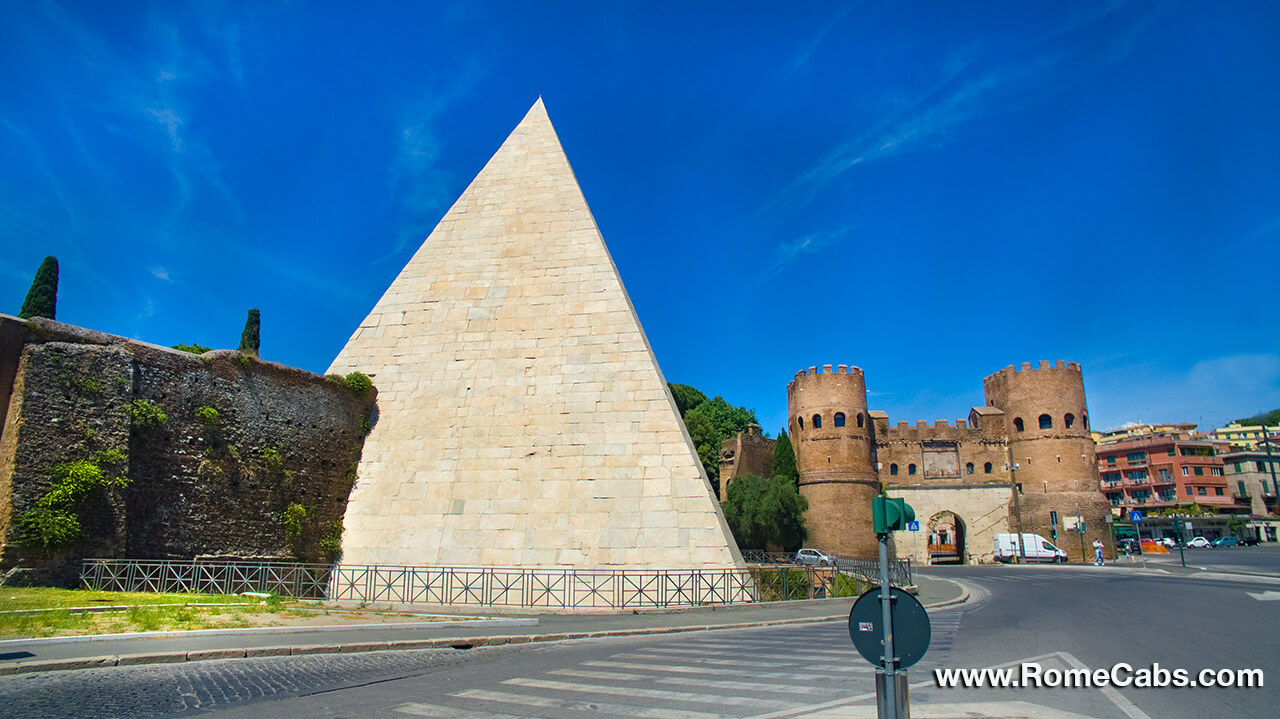
Protestant Cemetery:
Situated near the Pyramid of Cestius, the Protestant Cemetery, also known as the Non-Catholic Cemetery, is a historic burial ground. It is the final resting place for notable individuals, including poets Percy Bysshe Shelley and John Keats. The cemetery's serene atmosphere and beautiful landscape make it a peaceful and intriguing spot to visit.
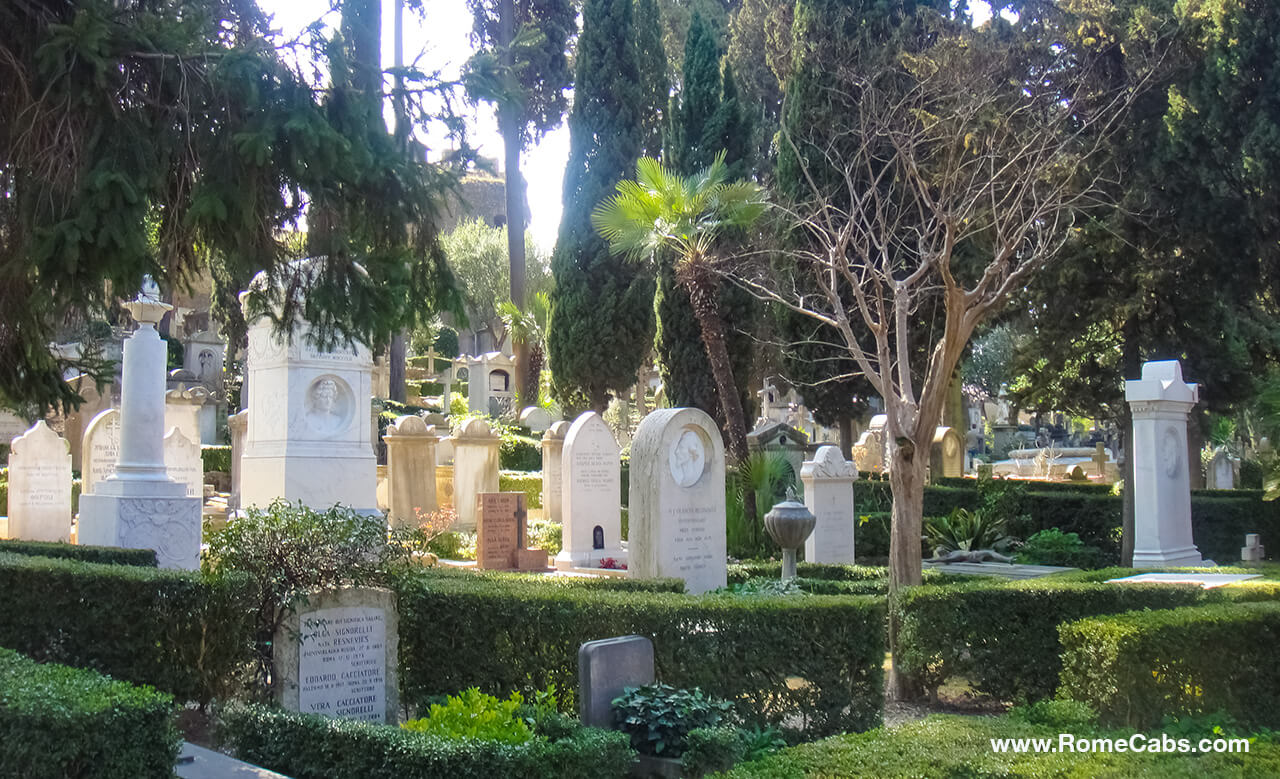
Centrale Montemartini Museum:
Housed in a former power plant, Centrale Montemartini is a unique museum that combines classical sculptures and industrial machinery. The museum juxtaposes ancient Roman statues with the machinery of the early 20th century, creating a fascinating contrast between ancient and modern elements.
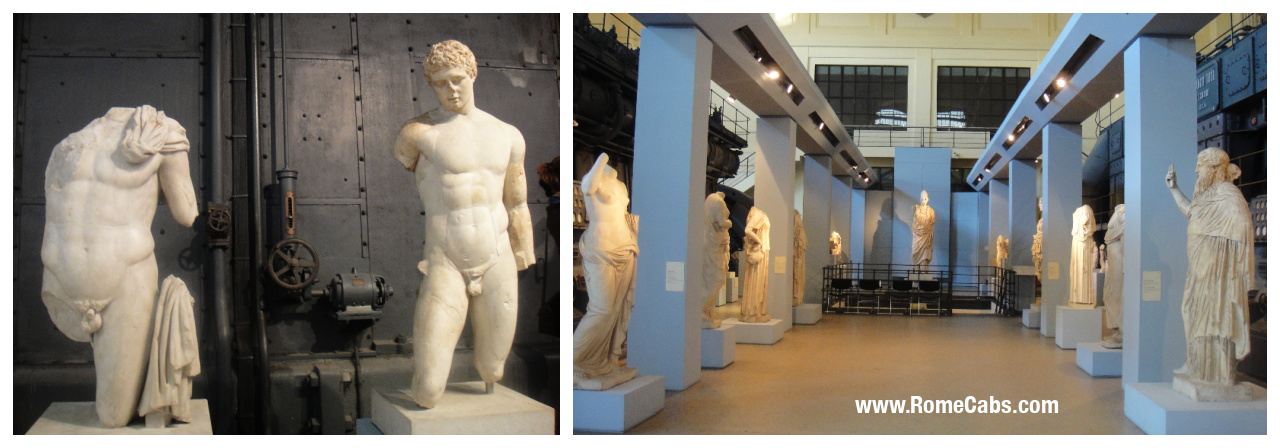
Ostia Antica:
A pivotal stop along the Via Ostiensis, Ostia Antica stands as a testament to the grandeur of ancient Rome's port city. Explore the remarkably preserved ruins of this once-thriving metropolis, including the Forum, grand amphitheater, and impressive mosaics that transport you back in time to the height of the Roman Empire's maritime power.
Read on and learn more about the ancient Roman roads of Ostia Antica.
3. OSTIA ANTICA
Among the notable roads within Ostia Antica, Via Ostiensis stands as a testament to the city's significance as a vital link to Rome. Starting at the southern gate, this road passed through the bustling commercial district, connecting Ostia Antica to the magnificent city of Rome.
Venturing to Ostia Antica, an ancient port city at the Tiber River's mouth, we are transported back in time to experience the vibrant hub of commerce and daily life during the Roman Empire. The well-preserved ruins of Ostia Antica offer a fascinating glimpse into the bustling streets, where merchants, sailors, and travelers from across the empire converged.
Exploring this remarkable archaeological site, stroll along the ancient Roman roads that formed the city's lifelines. These meticulously crafted pathways, designed with precision, allowed for the smooth flow of goods and people. As you walk in the footsteps of ancient Romans, the echoes of bustling crowds and the clatter of horse-drawn carriages come alive in our imagination.
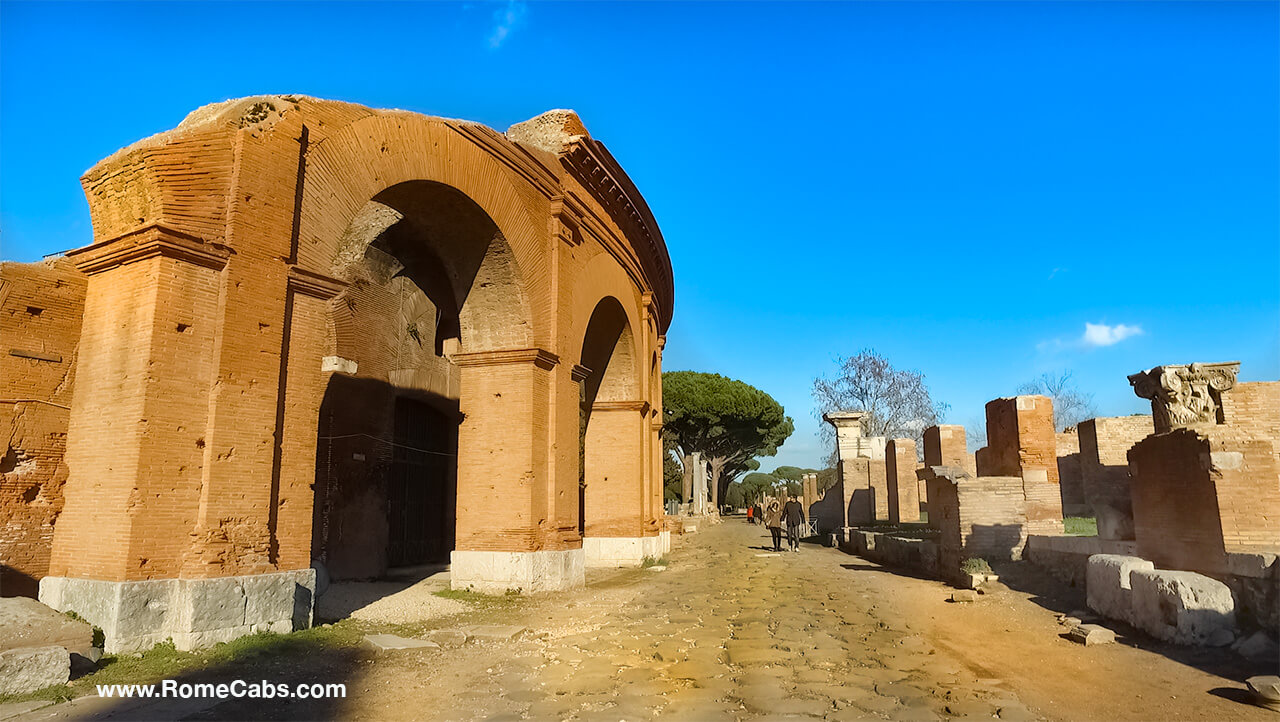
-
Ancient Roman City Planning: Decumanus and Cardo Maximus
In the masterful city planning of ancient Rome, the terms "decumanus" and "cardo maximus" defined the primary intersecting streets forming the city's grid pattern.
Decumanus Maximus:
The Decumanus Maximus was the main east-west street in Ostia Antica. It stretched across the city from the Porta Romana (Roman Gate) to the city's northeastern gate. Lined with shops, workshops, and residential buildings, this bustling street was a vibrant hub of commercial and social activity.
Cardo Maximus:
The Cardo Maximus was the principal north-south street in Ostia Antica. It intersected with the Decumanus Maximus near the center of the city, forming a crucial junction. Along the Cardo Maximus, one could find more shops, taverns, and other establishments that catered to the needs of the city's inhabitants and visitors.
Via dei Dipinti:
The Via dei Dipinti, also known as the "Street of the Paintings," is a well-known street in Ostia Antica. It is named after the numerous frescoes and decorative paintings that adorned the walls of the buildings along this street. These artworks offer insights into the artistic and cultural life of the city.
Via dei Molini:
The Via dei Molini, or "Street of the Mills," was an important street that housed numerous grain mills. It played a significant role in the city's economy, as it was the place where grains were processed into flour for baking bread, a staple food in ancient Rome.
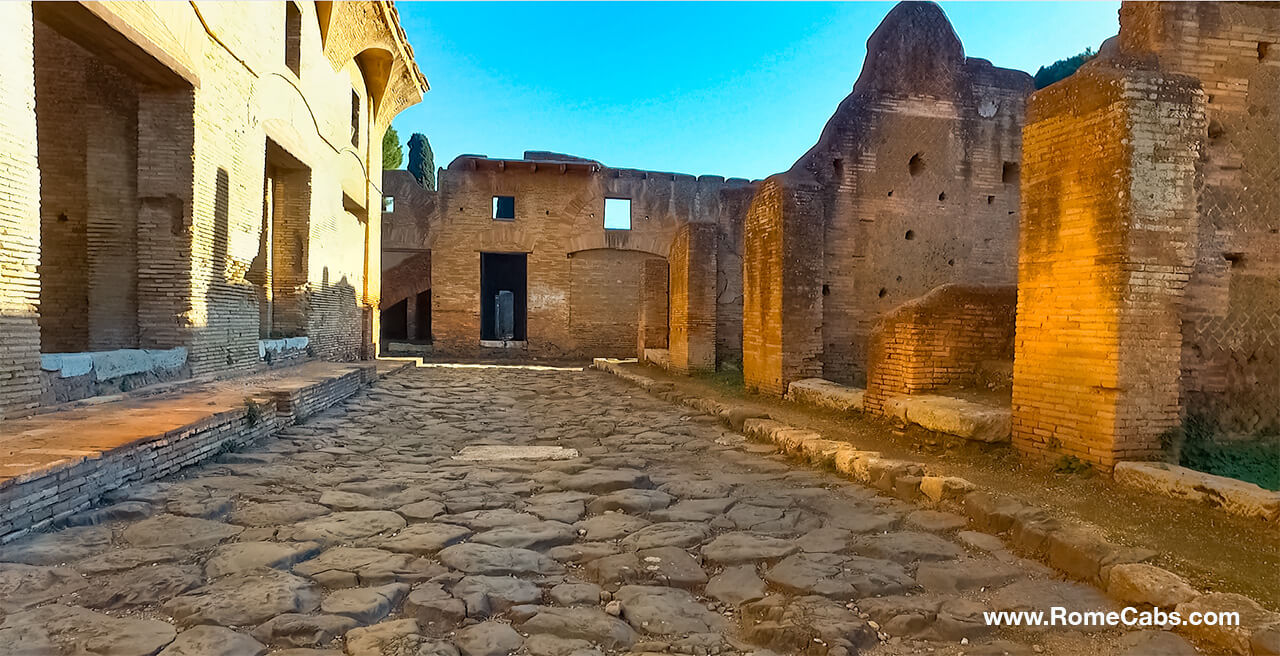
Walking along these ancient Roman roads, we immerse ourselves in the atmospheric ambiance of a bygone era. The remarkably preserved ruins, adorned with intricate mosaics and inscriptions, transport us to the vibrant street life that animated these thoroughfares. As we gaze upon the well-preserved buildings and structures that line the ancient roads, we gain insights into the daily activities of the Roman citizens, igniting a sense of awe and wonder.
Embark on a captivating journey through time on our Ostia Antica and Cerveteri Tour from Rome, immersing yourself in the wonders of ancient Etruscan and Roman civilizations. Uncover the rich origins of Italy as you explore two remarkable sites that hold the keys to understanding the ancient past.
4. POMPEII
A journey through the ancient Roman roads would be incomplete without experiencing the captivating ruins of one of the most fascinating cities of the Roman Empire. Pompeii was destroyed by Mount Vesuvius in 79 AD freezing it in time and offering a remarkable window into ancient Roman life.
As you walk the ancient streets of this UNESCO World Heritage Site, immerse yourself in the past, admiring the perfectly preserved frescoes and unraveling the tragic events that unfolded here centuries ago.
-
The Ancient Roman Roads of Pompeii:
The well-preserved streets, paved with ancient cobblestones, guide us through the city's layout and reveal the intricate network of roads that link its neighborhoods, public spaces, and notable landmarks.
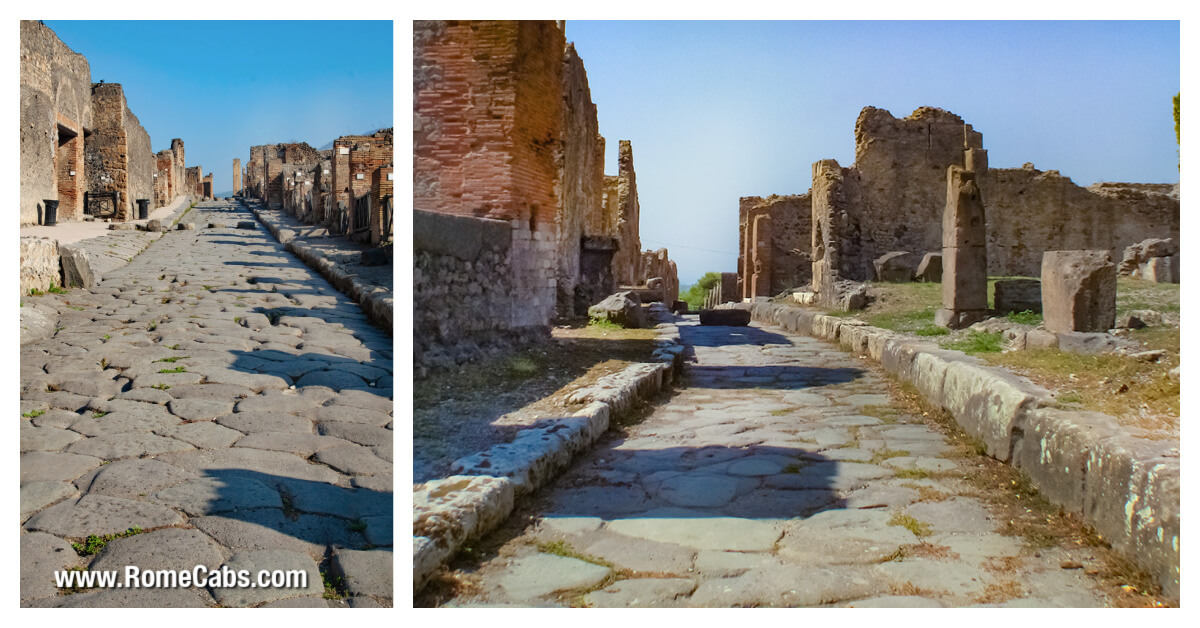
Via Dell'Abbondanza:
At the heart of Pompeii, Via dell'Abbondanza reigns as the main thoroughfare, bustling with activity and serving as the vibrant commercial and social hub of the city. Stretching nearly one kilometer, this street was lined with a diverse array of shops, workshops, and residences. Today, as you walk along Via dell'Abbondanza, glimpse the remnants of ancient storefronts, with their enduring stone counters and shelves that once showcased merchants' wares. This lively street offers a fascinating glimpse into the daily life and economic vibrancy of ancient Pompeii.
Via Stabiana:
Running parallel to Via dell'Abbondanza, Via Stabiana emerges as another significant street within Pompeii. It served as a vital thoroughfare, connecting different neighborhoods of the city. Along this street, a tapestry of residential buildings, shops, and workshops paints a vivid picture of Pompeii's diverse lifestyles and occupations. The remnants of beautiful frescoes, intricate mosaics, and architectural features provide a testament to the thriving community that once thrived here.
Decumanus Maximus:
The Decumanus Maximus takes its place as one of Pompeii's primary east-west streets, intersecting with Via dell'Abbondanza. This broad and bustling thoroughfare connected crucial areas of the city, leading to temples, public buildings, and grand residences. Intersections with smaller streets add a dynamic element to the urban landscape, reflecting the vibrant activities of daily life that animated Pompeii.
Cardo Maximus:
As the principal north-south street in Pompeii, the Cardo Maximus intersected with the Decumanus Maximus, creating the grid pattern that shaped the city. Running north-south and intersecting with Via dell'Abbondanza, the Cardo Maximus divided Pompeii into two sections. This street served as the central axis of the city's urban plan, granting access to significant public buildings, including the Forum. Strolling along the Cardo Maximus, we encounter monuments, religious structures, and well-preserved houses, marveling at the alignment and architecture that offer insights into the organized layout of ancient Pompeii.
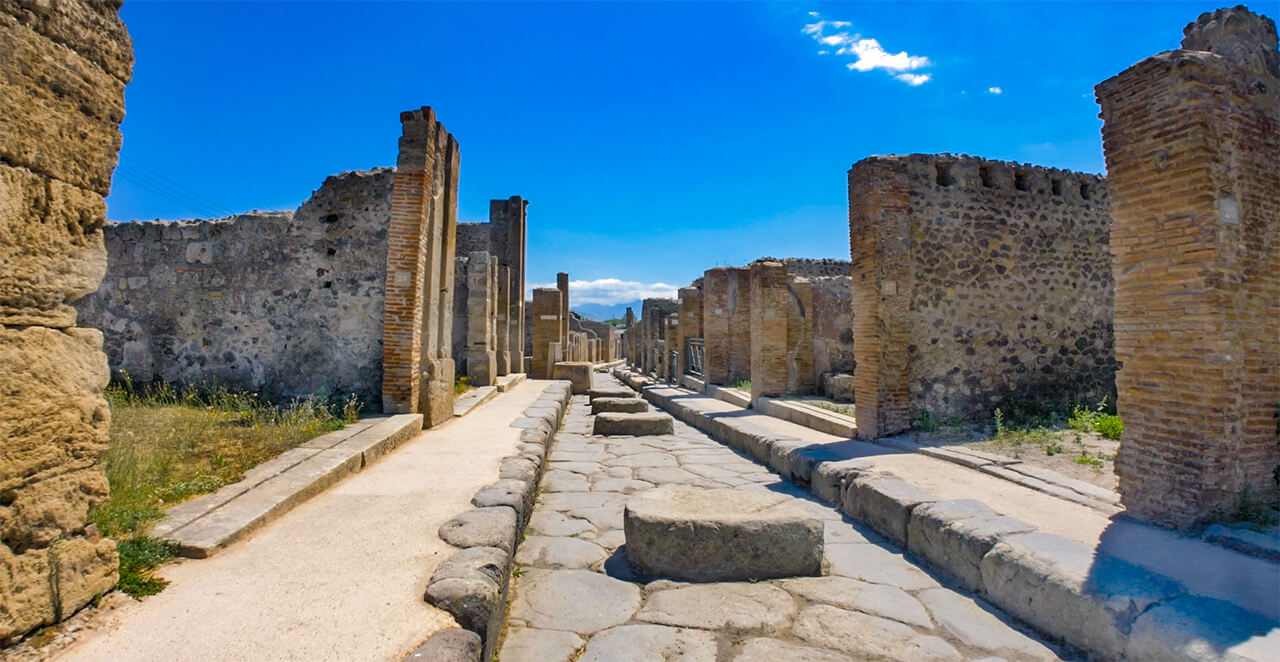
Exploring the Sidestreets of Pompeii:
Venturing beyond the main roads, we venture into the labyrinthine network of sidestreets that crisscrossed Pompeii. These narrower lanes invite us to discover the intimate aspects of daily life, leading us to residential areas, small shops, and artisan workshops. Walking along these side streets, you'll encounter hidden curiosities about Pompeii ruins you probably did not know existed, and discover secrets of a once-thriving community.
You too walk along the ancient roads of Pompeii on our day tours from Rome to Pompeii and the Amalfi Coast.
* ALSO READ: How far is Pompeii from Rome?
5. HERCULANEUM
The ghost city of Herculaneum, an ancient Roman city also destroyed by Mount Vesuvius, had a well-preserved street network that consisted of two main types of roads: cardines (cardo in singular) and decumanus. These ancient Roman streets still exist in Herculaneum today, allowing visitors to walk in the footsteps of the ancient people who lived more than 2,000 years ago.
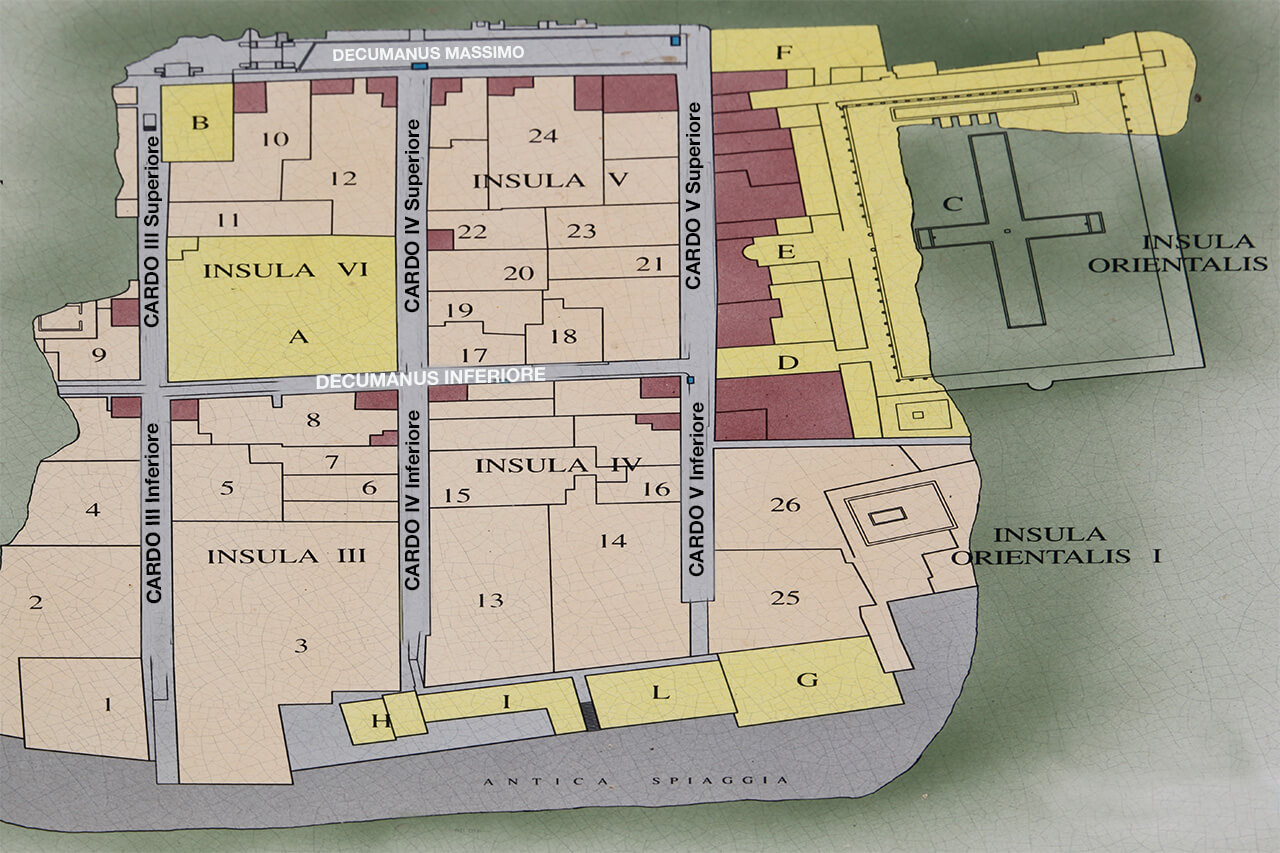
Cardo Superiore and Cardo Inferiore
The Cardo Inferiore and Cardo Superiore were the main north-south streets in Herculaneum. The Cardo Inferiore, the lower-level street, provided access to various buildings, shops, and residences. It was a bustling thoroughfare that was likely filled with the activities of daily life. The Cardo Superiore, situated above the Cardo Inferiore, ran parallel to it, offering an elevated perspective of the city and connecting different areas within Herculaneum.
Decumanus Massimo and Decumanus Inferiore
In addition to the cardines, Herculaneum had two significant east-west streets known as the Decumanus Massimo and Decumanus Inferiore. The Decumanus Massimo was the main east-west street that intersected with the cardines, creating a grid-like pattern in the city. It served as a vital artery, facilitating movement and providing access to important structures and public spaces. The Decumanus Inferiore, located parallel to the Decumanus Massimo, acted as a secondary east-west street, offering additional pathways through the city.
Walking along these ancient Roman streets in Herculaneum today provides a unique and awe-inspiring experience. Visitors can truly feel the connection to the past as they step on the same paving stones that the ancient Romans once walked on. It is a tangible link to history, allowing us to imagine the vibrant city life that once thrived in Herculaneum. As you stroll along the ancient streets you can witness the remains of buildings, shops, and other structures that line these streets, providing glimpses into the daily lives of the ancient inhabitants.
On our day tours from Rome to Herculaneum and Amalfi Coast you have the chance to immerse yourself in the rich history of Herculaneum and gain a deeper understanding of the ancient Roman Empire.
HISTORY BUFFS also enjoy the following blogs:
Experience the grandeur of ancient Rome as you embark on a captivating journey through time along the ancient roads of the Roman Empire. Whether you're an avid history enthusiast or seeking a unique adventure, walking these historic routes is an opportunity to immerse yourself in the echoes of a bygone era. With Stefano's RomeCabs, you can explore the strategic military roads that connected distant provinces and the trade routes that shaped the empire's economy, gaining firsthand experience of the legacy of the Roman Empire.
From the iconic Via Appia and Via Ostiensis to the ancient roads of Ostia Antica, Pompeii, and Herculaneum, each street carries its own unique charm and historical significance. Let us take you on an unforgettable adventure, where you'll delve into the intriguing history of these roads, explore archaeological sites, and gain insights into the daily life of ancient Romans. Walk in the footsteps of emperors, soldiers, and merchants as you journey along the ancient roads of the Roman Empire.
Thank you for choosing Stefano's RomeCabs for your Rome Tours and Shore Excursions from Civitavecchia. We look forward to showing you beautiful places in Italy!
* Find us online also on:
